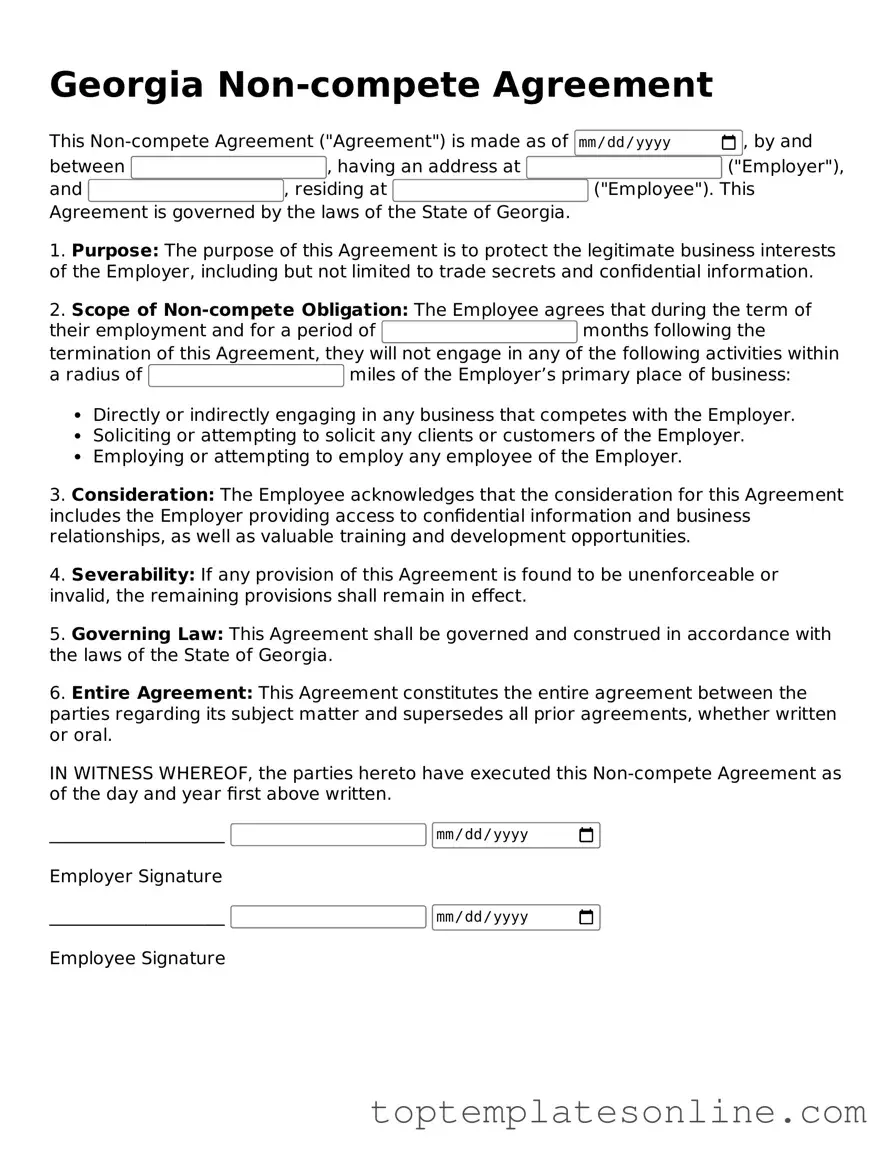Blank Non-compete Agreement Template for Georgia State
A Georgia Non-compete Agreement form is a legal document that restricts an employee's ability to work for competitors or start a similar business after leaving their current employer. These agreements are designed to protect a company's confidential information and trade secrets. Understanding the nuances of this form is essential for both employers and employees to ensure fair practices and compliance with state laws.
Customize Non-compete Agreement Here
